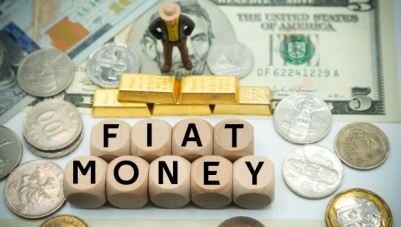Fiat currency is the money we use every day — the paper bills and coins that we exchange for goods and services. But what makes this type of currency different from others, like gold or silver, and why is it the backbone of modern economies?
What is Fiat Currency?
Fiat currency is a type of money that has no intrinsic value. This means it isn’t backed by a physical commodity like gold or silver. Instead, its value comes from the trust and confidence that people have in the government that issues it. In simpler terms, we accept fiat money because the government says it’s worth something.
For example, when you use U.S. dollars, the government of the United States guarantees its value. The term “fiat” comes from the Latin word fiat, which means “let it be done” or “it shall be.” This essentially means that the government gives the money its value by law.
How Does It Work?
Fiat currency works through a system of trust. A country’s government and its central bank (like the Federal Reserve in the U.S.) issue and control the money supply. Since there’s no physical backing, the value of fiat money is determined by supply and demand, economic conditions, and confidence in the country’s financial stability.
For example, when the economy is growing, people earn more money and spend it. This helps increase the value of the currency. But if the economy is unstable, people might lose faith in the currency, leading to inflation (prices going up), which reduces the value of the money.
An Example of Fiat Currency:
A common example of fiat currency is the U.S. dollar ($). It has no intrinsic value—it is not made of precious metals. The only reason it is accepted for transactions is because people trust the U.S. government to manage and regulate its value. Whether you’re buying groceries, paying for a movie ticket, or receiving a paycheck, you’re using U.S. dollars, which are considered a stable form of fiat currency.
You might have a $20 bill in your wallet right now. Gold or any other physical commodity does not back this note. It’s just paper (or more recently, a blend of cotton and linen). Its value is derived from the trust placed in the U.S. government and the Federal Reserve.
Advantages and Challenges:
One of the advantages of fiat currency is flexibility. Governments can manage the money supply, which helps control inflation and stimulate economic growth. However, this also brings risks. If too much money is printed or the government loses credibility, the value of fiat money can decrease, leading to inflation or even hyperinflation.
Conclusion:
Fiat currency is all about trust. We use it because we believe in the system that backs it. It’s a convenient way to buy goods and services, but its value is always dependent on the stability of the government that issues it. Understanding this system is key to understanding how money works in our world today.
– Ketaki Dandekar (Team Arthology)
Read more about Fiat Currency here – https://www.investopedia.com/fiat.asp
